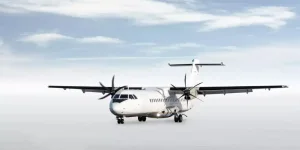- Views: 1K
- Replies: 6

India's ambitious RTA-90 program, which aims to develop a domestically produced 90-seater regional aircraft, could be significantly accelerated and strengthened through a strategic partnership with Brazilian aerospace giant Embraer.
Experts believe that Embraer's proven track record, technological prowess, and deep understanding of the regional aviation market could be a game-changer for India's pursuit of self-reliance in the aviation sector.
The RTA-90 represents a critical step towards bolstering India's domestic aviation industry and reducing reliance on foreign aircraft. However, developing a modern regional jet is a complex undertaking that requires specialized expertise in design, manufacturing, and certification – areas where India's civil aviation sector is still evolving.
Embraer, renowned for its successful E-Jet family, has decades of experience in designing and manufacturing regional jets that are recognized for their aerodynamics, fuel efficiency, and passenger comfort. This wealth of knowledge could be instrumental in ensuring the RTA-90 meets global standards and competes effectively in the international market.
Here's how Embraer's technology and expertise could fast-track the RTA-90's development:
- Reduced Development Timelines: Embraer's involvement could significantly shorten development timelines by providing access to proven technologies, efficient design methodologies, and a deep understanding of certification processes. This could help avoid costly delays and ensure the RTA-90 remains competitive in a rapidly evolving market.
- Enhanced Design and Engineering: Embraer's expertise in aerodynamics, fuel efficiency, and passenger comfort could be directly applied to the RTA-90's design, resulting in a superior aircraft that meets the needs of airlines and passengers.
- Improved Manufacturing Processes: Embraer could offer guidance on advanced manufacturing techniques, materials selection, and quality control, helping India establish a robust and efficient manufacturing ecosystem for the RTA-90.
- Streamlined Certification: Navigating the complex world of aircraft certification can be challenging. Embraer's experience in this domain could help ensure the RTA-90 meets all necessary regulatory requirements efficiently.
- Access to Global Supply Chains: Embraer could facilitate access to its established global supply chains, enabling India to source high-quality components and materials for the RTA-90.

